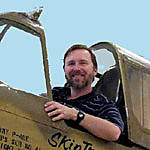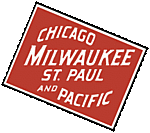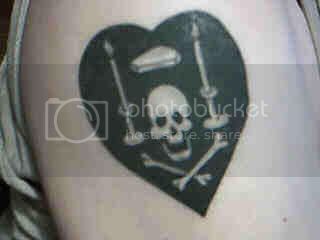Since we have had a short seminar on the German lozenge fabric camouflage used in WWI it seems appropriate that we try our hands at the French multi colour (2-5) camouflage used in the same time period. From Dan San Abbott;
". . .The French fivie color camouflage was adopted in late 1917 and was used on all day aircraft, fighters, observation reconnaissance and bombers. It purpose was to reduce visibilty,and to add protection fron the ultraviolet rays of the sun. The upper and side surfaces were in a dark green, an apple green, beige and chocolate brown and matt black, the under surfaces were light blue, or light yellow and aluminum. The upper (except for black)and lower fabric colors were mixed with aluminum powder, and this is what achieved the reduced visibility. The aluminum powder was 40% by weight and the colored pigments excepting the matt black, the remaining 60%. The metalized dope was not use on metal panels. An oil based paint of an approximate colour was used on adjacent metal panels.
The French firm Société Nauton Freres et de Marsac developed this camouflage dope and the patent was held by their chemist, Mon.T.F. Tesse.They had made a study od earth and plant colors and determine their light reflectance. They then developed a camouflage scheme to utilize these "colors. Patterns were developed for each makers aircraft Section Technique d'Aeronautique (STAe). Each manuuacturer was provided with the appropriate color pattern. Licensed contractors, all had slight variations that were consistant to the maker. By studying these variations the aircraft manufacturer can be identified in photographs a particular, i.e. a SPAD XIII.
A final note. We can be thankful to made this study back in the 1960s, in a program called "Project Butterfly". These men are/were H.L.Elman, H.D.Hastings, Bergen Hardesty and Alan Toelle. Without their efforts we would still be getting it wrong. "Project Butterfly" was published in Cross & Cockade, Part 1, Vol. 9, No. 1, Spring 1968. Part 2, Vol.13, No.2 1972 Summer 1972, Part 3 Vol.13, No.4 Winter 1972.

First we will start with a list of references:
Aeroplane Monthly, IPC Magazines Ltd. Vol. 19, #8, Aug. 1991.
American Aces of WWI by Franks, Osprey Pub. 2001.
‘To Capture the Rainbow...’ by S. Lawson, Cross & Cockade Intl. Vol. 29, #1, 1998.
‘...Before the Colors Fade’ by D. Eubanks, Cross & Cockade USA Vol.19, #1, 1978.
Lafayette Foundation Archives, Denver Colorado USA.
‘Project Butterfly’ by Hardesty, Hastings, and Toelle, Cross & Cockade USA Vol. 9, and 13, 1972.
Report on Spad XIII S.4377 by A. Toelle, unpublished to date 2001.
Report on Spad XIII S.6625 by A. Toelle, unpublished to date 2001.
Report on Spad XIII S.7689 by A. Toelle, unpublished to date 2001.
Report on Spad XIII S.8340 by A. Toelle, unpublished to date 2001.
Report on Spad XIII S.15295 by A. Toelle, unpublished to date 2001.
Report on Spad XIII S.16594 by A. Toelle, unpublished to date 2001.
SPAD XIII C.1 by C.F.Andrews, Profile #17, 1965.
SPAD XIII C.1 by J.M.Bruce , Windsock Datafile #32, Albatros Pub. 1992.
‘The Charge of the Yellow Ram ( the138th Aero Sqdn)’by S. Lawson, Cross & Cockade Int. Vol.25, #4, 1994.
Windsock , Albatros Pub. Vol. 6, #4, July/Aug., 1990.
Windsock, Albatros Pub. Vol. 6, #5, Sept/Oct., 1990.
Windsock, Albatros Pub. Vol. 8, #1, Jan./Feb. , 1992.
Windsock, Albatros Pub. Vol. 9, #4, July/Aug., 1993.
http://www.wwi-n-plastic.com/index.php?act=viewProd&productId=81






























